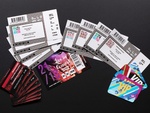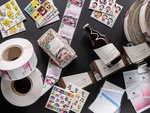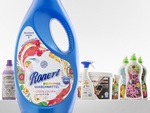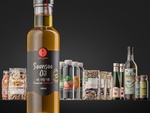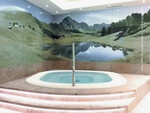Durst Workflow - Release Note 1.14.0
With version 1.14.0, users can take advantage of innovations in the environment of variable data, print statistics as well as grid charts and the correction of print items. In addition, improvements have been made in the area of variable data and the impose editor.
Check-in templates
In this release, check-in templates are provided for system-wide settings, Force Print Job, and Hotfolders. Checks and corrections can be used for the check-in profiles.
Shape Nesting for XML Hotfolder
Shape nesting can be specified and configured directly via the XML control file for a production job.
Online Approval-portal and Approval-reports
Starting from this version, approval-reports as well as project names can be named automatically based on a defined naming scheme. In addition, filtering and sorting options have been implemented in the online-approval-portal.
Preview files for printing systems
In this version, a new system setting has been implemented to generate the preview for the printer software from the rendered data when the production job is transferred to the printer. This saves time and resources.
Fotoba – XLA-170
The XLA 170 series cutter from Fotoba can be controlled with this version. The selection of the cutter determines the default setting of marks.
PDF-Cut-Files
Another cutter - PDF Cutter - is integrated in the Workflow, which allows to create a PDF cut file. This PDF cut file can be used for various cutting devices that support PDF files. Which layers, colors and marks should be created in the PDF can be determined by mapping spot colors.
Cutter device »OptiScout Prepare«
From this version on, the cutter devices can be configured in an extended way and the materials can be imported from OptiScout Prepare into the Workflow. The materials can then subsequently be used for production job. Extended settings are available for cutter devices.
Improvements:
Warnings during VDP import
When importing VDP settings, the system checks whether the dimensions of the print item differ from the original print item. If the dimensions do not match, a warning is displayed in this tab.
Delete VDP settings
There is a possibility to remove the current VDP settings of a print item, so that the respective item is no longer marked as a VDP file.
Tiling - save extension
If a tiling is saved - as a multi-page document in a production job or individual articles - from now on an automatic data correction runs in the background. This correction removes all el- ements which are outside the media-box and serves for a correct generation of a cut file.
Split multi-page PDFs
Starting from this version a new system setting is available, which defines whether the number of copies is to be divided among the divided items or whether it is to be taken over constantly.
Impose overview for multi-page output
From this version on, the results of the nesting optimization are displayed per impose page.
Scaling factor
In the print data view, the user is shown in the document information area whether the respective print item contains a scaling factor or not.












